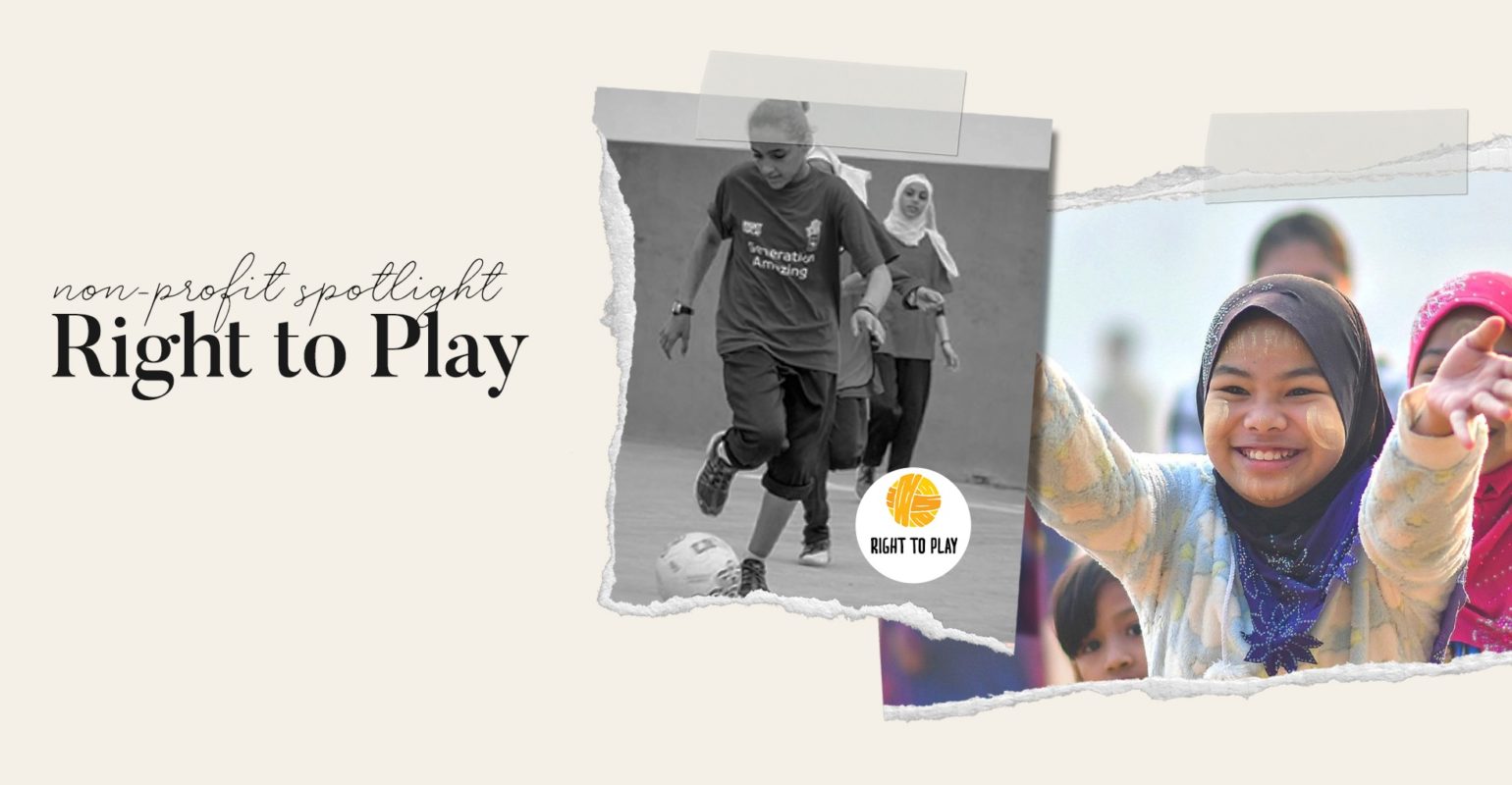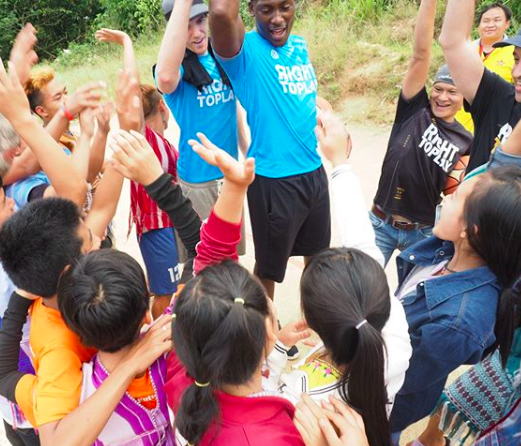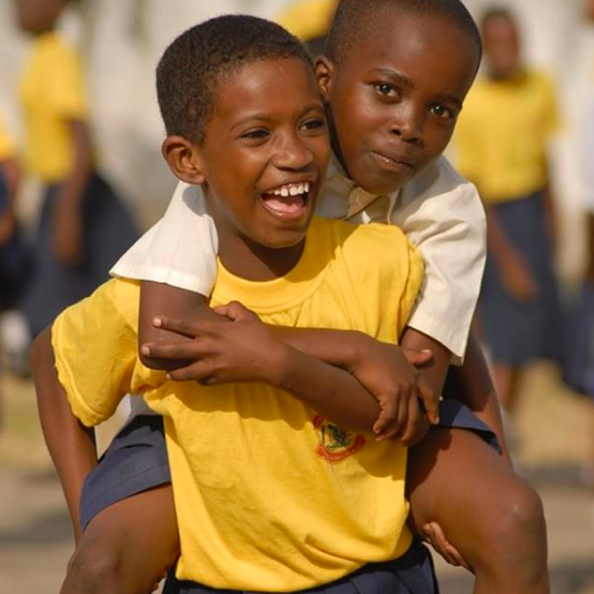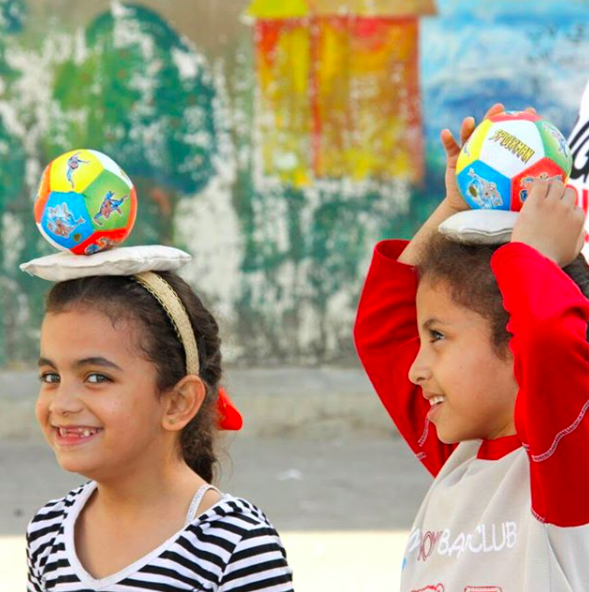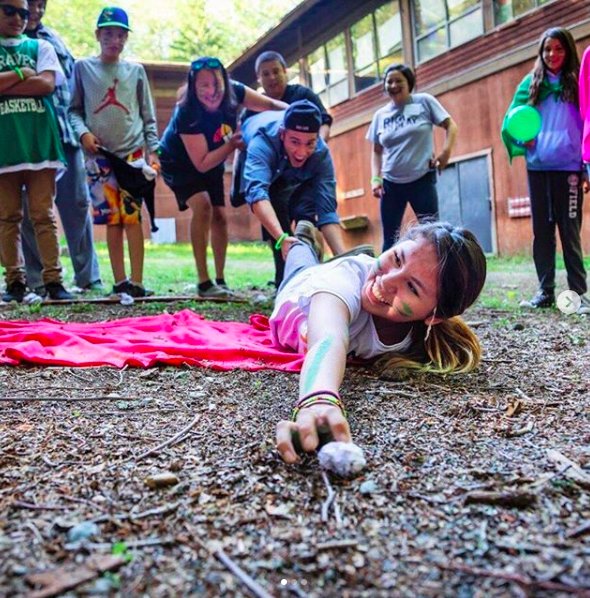Imagine for a moment what a playground looks like for a child living in a war-torn country.
Does it have monkey bars, slides, and swings?
Are schoolyards filled with joyful excitement?
For Malual and thousands of other children worldwide, there wasn’t much around that lifted their spirits and eased the anxiety of living in an in-conflict or poverty-stricken nation.
That is, until they came in contact with games and activities that not only protected, informed, and empowered them, but that also had a positive impact on the adults in their community.
Enter Right To Play.
What is Right To Play?
Right To Play is a worldwide organization that uses the power of play and educational games to uplift and improve the lives of children facing adversity in their everyday lives.
History
The founder of Right To Play is Johann Olav Koss.
A few months before the 1994 Lillehammer Winter Olympics, Johann (a Norwegian speed skater and four-time Olympic gold medalist) led a humanitarian trip to Eritrea, a newly-formed country in Africa.
While there, he encountered the harsh realities of living in a region healing from decades of war.
As children played against a backdrop of burned-out tanks, one boy stood out and made Johann realize just how important it is to provide youths with healthy outlets that help build teamwork, self-esteem, safety, and a better quality of life.
It was this experience that led him to create Right To Play.
Local volunteer coaches and staff across the globe have been managing programs since 2000 with the common goal to help build life skills and healthy, safe environments for youths living throughout the world.
The early years of the organization (2001 – 2004) focused on humanitarian needs in Africa, Asia, and the Middle East. Programs launched in Uganda, Tanzania, Mozambique, Mali, Thailand, Rwanda, and the Palestinian Territories, helping 500,000 children to “rise” each week.
Johann’s Right To Play now serves children in 15 countries.
The nonprofit’s programs focus on five key areas:
- Education
- Gender equality
- Health
- Child protection
- Peace
Today, Right To Play continues to thrive primarily off of the actions of volunteers, partnerships, donors, and athlete ambassadors (including over 300 professional and Olympic sports figures) that help millions of children “to rise and recapture hope.”
Project Examples
There’s a lot a child can learn and gain when they’re at play.
Over and above the physical health benefits that exercise and games provide, there’s a social and emotional component to Right To Play that extends well beyond “child’s play.”
The beneficial, long-lasting changes that follow energizes families and entire communities.
Each week, approximately 1.9 million children around the world benefit from Right To Play programs, which include the following types of programs:
1. School Attendance Programs
Connecting more children to quality education.
Right To Play fills classrooms with eager-to-learn students through community efforts.
The goal: Work towards inspiring children to enroll in school and regularly participate in class.
Right To Play trains local teachers and coaches on how to make education more exciting, enticing, and inviting. Leadership clubs also form at the school level. The nonprofit also trains Junior Leaders in the community as young as eight years old!
As a result, Right To Play programs have seen attendance rates soar and have led to children staying engaged, focused, and active longer at school.
2. Life Lessons and Hygiene Programs
Improving youth and community health.
Anyone up for a game of “Mosquito Tag?”
Right To Play programs are so much more than encouraging everyday exercise.
The organization uses games and play activities to empower kids with the skills, knowledge, and motivation needed to prevent diseases.
Coaches train to establish open lines of communication and dialogue with kids on significant, local health issues, such as:
- Malaria
- HIV and AIDS
- Sexual health
- Everyday hygiene practices
Children learn essential life-saving lessons and form healthy habits, such as how to use a mosquito net or how to properly wash their hands.
3. Community and Gender Equality Programs
Building peaceful communities.
Right To Play programs invigorate communities and help create a happier, more peaceful environment that everyone can thrive better in, regardless of ethnicity, culture or gender.·
- A game of Right To Play “Protector Dodgeball” comes with a twist. The goal isn’t to hit an opponent; it’s all about protecting teammates.
- “Volley Tennis” concentrates on building communication skills, and places less emphasis on how many points are scored.
- In Pakistan, Right To Play introduces girls to games and activities that help them clear gender and cultural hurdles within their communities.
Impact and Future Plans
Play Time is essential for quality education!
And Right To Play makes sure it happens for 2.3 million children each year.
Since its inception, the nonprofit has reached the following milestones:
- In Uganda, 91% of children in Right To Play programs know how to prevent transmission of HIV vs. 50% of children that do not attend.
- Peer violence in Pakistan-based schools—a challenge faced by as many as 94% of boys in some schools—was reduced by 25% in schools with Right To Play programs.
- In just three short months, one Right To Play Leadership Club encouraged an impressive 78 children to enroll and attend school every day.
Looking towards the future, Right To Play continues to fundraise and further develop programs that benefit greater numbers of children, such as:
- Games Over Guns programs that aim to transform the lives of an estimated population of 300,000 child soldiers in the world.
- Holding the largest-ever “play date” at the Mae La refugee camp, the biggest settlement along the Myanmar-Thailand border.
- Organizing more innovative benefits and events, like the 2019 Ultimate Sports Quiz, which raised more than $250,000 to support Right To Play’s programs.
How to Donate
To learn how to use Giving Assistant to easily donate a portion or all of your cash back to Right To Play, visit their fundraising page.
- First, sign up for a Giving Assistant account.
- Select Right To Play on your Giving Assistant account settings menu.
- Choose how much of your balance from cash-back rewards you’d like to donate.
- The next time you shop using Giving Assistant and earn cash back, you’ll automatically donate your set percentage to Right To Play.
Giving Assistant members interested in donating to Right To Play can choose just a portion (or all!) of their cash back earnings to go to Right To Play.
If you need more help, you can see how to use Giving Assistant to shop online and donate to a nonprofit here – how Giving Assistant works here.
If you haven’t already you can also download the Giving Assistant button cash back extension for your desktop browser.
This will help you easily lend your support to the Right To Play nonprofit AND save money on your everyday online purchases at thousands of online retailers.
Not a member yet? Sign up here to start supporting Right To Play as you shop online. If you’d like to learn more about Right To Play and change the life of a child today for the better, visit Right To Play.

